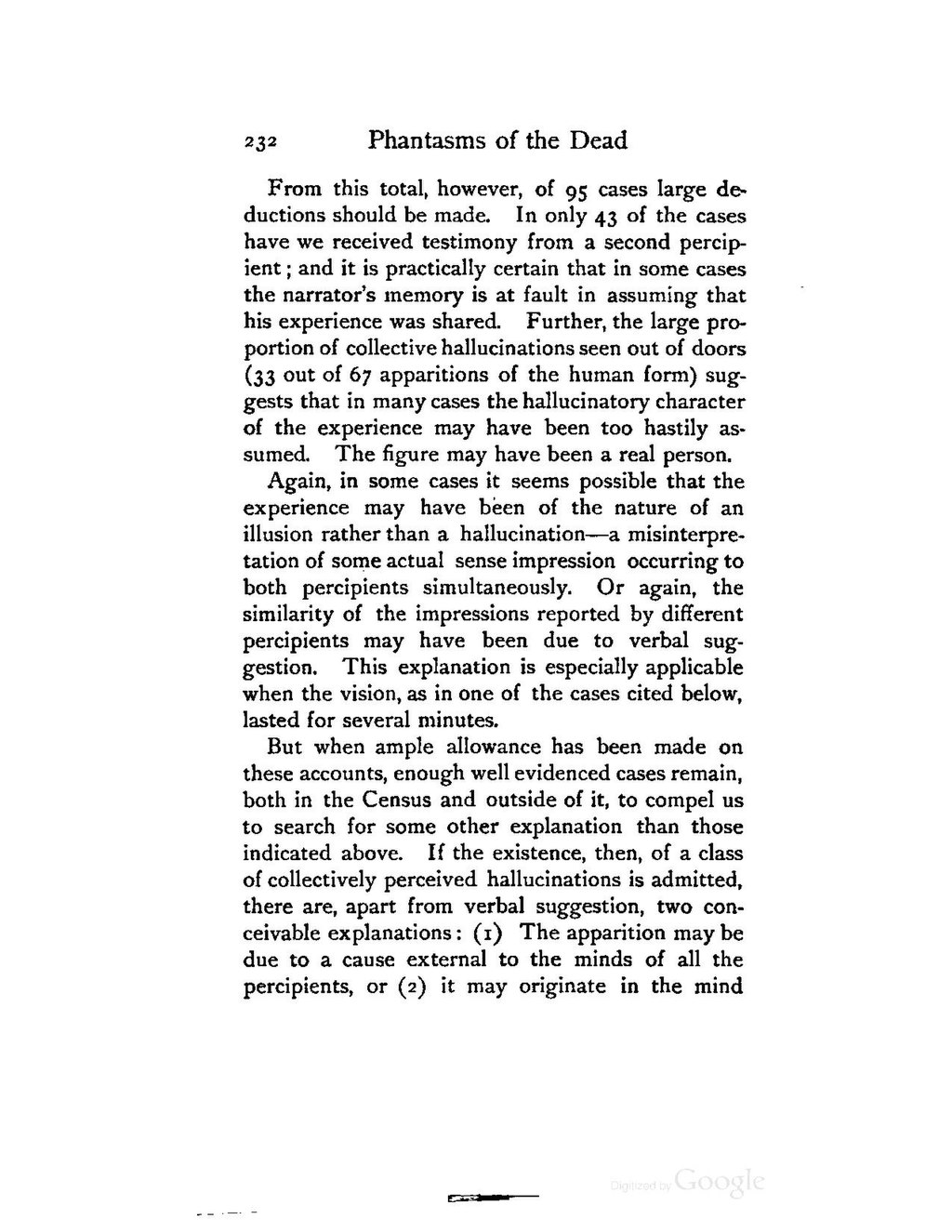From this total, however, of 95 cases large deductions should be made. In only 43 of the cases have we received testimony from a second percipient; and it is practically certain that in some cases the narrator's memory is at fault in assuming that his experience was shared. Further, the large proportion of collective hallucinations seen out of doors (33 out of 67 apparitions of the human form) suggests that in many cases the hallucinatory character of the experience may have been too hastily assumed. The figure may have been a real person.
Again, in some cases it seems possible that the experience may have been of the nature of an illusion rather than a hallucination—a misinterpretation of some actual sense impression occurring to both percipients simultaneously. Or again, the similarity of the impressions reported by different percipients may have been due to verbal suggestion. This explanation is especially applicable when the vision, as in one of the cases cited below, lasted for several minutes.
But when ample allowance has been made on these accounts, enough well evidenced cases remain, both in the Census and outside of it, to compel us to search for some other explanation than those indicated above. If the existence, then, of a class of collectively perceived hallucinations is admitted, there are, apart from verbal suggestion, two conceivable explanations: (1) The apparition may be due to a cause external to the minds of all the percipients, or (2) it may originate in the mind
